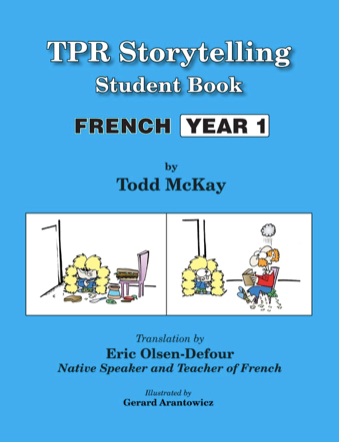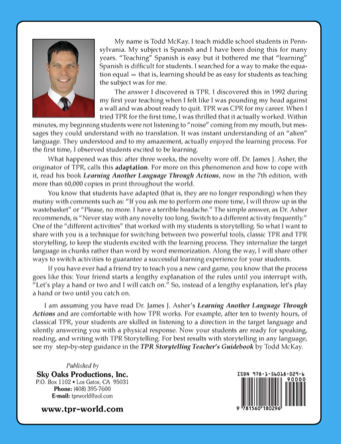Module 3
For this module, we were able to dive into the importance of adaptations with literacy. Being a French language teacher, most of my daily practice includes figuring out ways in which my students of all abilities and language levels can take the most out of our class. It started out as quite a daunting task. How am I supposed to effectively teach a class with such a wide variety of levels? There were students who had been in French Immersion during the beginning stages of elementary school next to students who had never taken a French class in their life. It felt impossible when I first started teaching. Over time, I started to realize the benefits of adaptations and differentiation within my lessons. Finding ways in which I can enrich my lessons appropriately was something that I started to better understand the more I worked with students. While I am no expert (whatsoever!), I now know a few things here and there to help my students feel at ease and taken care of within my classroom.
Resource for Reading Strategies:
The resource I decided to look at is one that covers TPRS and the basic surrounding it. TPRS, with the full term Total Physical Response Storytelling or the new term Teaching Proficiency through Reading and Storytelling, is a unique way to teach a language. During my Professional Development Program, we were fortunate enough to participate in a TPRS lesson with Spanish. It was interesting participating as a student, as I had never experienced a TPRS lesson before, and found the methods used to be quite eccentric, captivating, and educational.
TPRS plays off of the brains need for Comprehensible Input in order to learn a new language. It provides students an opportunity to participate and listen throughout the course of the lesson. The idea of TPRS includes the outline of a story for the class completed by the teacher. The teacher repeats many aspects of the story, and adds personalized and comprehensible details to captivate the students with every word.
The stories are not extremely complicated, however, they do includes details to expose the students to a variety of vocabulary words and sentence structures. The teacher asks questions and clarifies details to ensure students understand the language being used. There is often a powerpoint, video, book, or visual cues that go along with the story as well.
The resource I chose is a resource that covers the basics of a TPRS lesson. The author, Todd McKay, mentions in his explanation behind the book that when he first started using TPRS that his students began hitting a wall after a few week of successful lessons. This resource covers the basics at how to keep this method fresh and intriguing for the students in our classroom. There are many resources out there for TPRS, including a variety of languages. This one covers the very basics and appears to be a great tool for someone teaching elementary French or possible grade 8 entry level French as well.


Looking at Phonetics
The next aspect of this module that stuck out to me was the teaching of phonics, or phonetics. In my language class, something we often put on the back burner is the pronunciation of letters, letter combinations, and words. It is something that is not always looked at as the most important thing to learn compared to reading and listening comprehension, speaking spontaneously, and writing. It is also not usually the most desired aspect of the language to learn. It requires full effort from the students (speaking out loud) and bigger risks than other criteria that we cover. However, something that students fail to understand, is that learning how to say words not only helps with overall pronunciation. It may help with listening, writing, and speaking as well!
In my classes, I often try to explicitly teach phonetics to my students. I show them symbols and ways to write out their words in the way that makes sense to how they sound. While I do not teach them the phonetic alphabet exactly, I do expose them to how it works, and how they can utilize it to increase their understanding of the language as a whole. It is something they will cover in university if they choose to continue on with learning French, however, it is also a practical skill that will help them throughout their years in secondary school as well.
Reading Strategies (for French Beginners)
My resource I chose regarding reading strategies is a video I found on Youtube regarding basic French reading skills. I chose the most basic option, as it is with the level that we begin with during grade 8 French.
The levels we follow with French range from A1, A2, to B1 and B2. A1 is beginner language, and this is where secondary schools begin with their French curriculum. There is always room for adaptations for many activities, however, for the most part, going over the basics of the language helps many students with their French journey.
The video is linked below, or, you can find it one Youtube with the name:
"10 Minutes of French Reading Comprehension for Absolute Beginners" by the account Learn French with FrenchPod101.com
The video, while fairly simple, can also lead to many lessons moving forward that cover the basics of reading with the French language. It talks about reading strategies students can use, and allows time for students to participate within a lesson. If I were to use this video in class, I would utilize it as a means of formative assessment. I would have students use our class set of whiteboards and complete the questions on those whiteboards as they appear on the screen. I can also go through each answer as we move throughout the video to ensure overall comprehension is occurring with the students in my class. As time moves on, we can move throughout the beginner videos and eventually move to intermediate throughout the course of the semester.
Post a comment